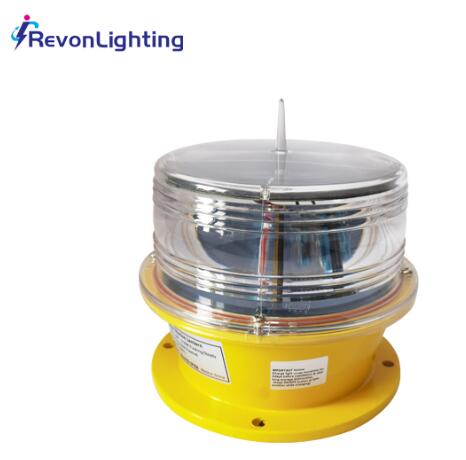Posted: 2025-04-21
The aviation industry relies on precision, safety, and efficiency, especially during nighttime or low-visibility conditions. One critical component ensuring safe airfield operations is the solar aviation lamp. These self-sustaining, energy-efficient lighting solutions have revolutionized runway and taxiway illumination, reducing dependency on traditional power sources while enhancing reliability. This article explores the significance, working mechanism, advantages, and future prospects of solar aviation lamps in modern aviation infrastructure.
The Role of Solar Aviation Lamps in Aviation Safety
Solar aviation lamps serve as essential visual aids for pilots during takeoff, landing, and taxiing. They are commonly used in:
Runway edge lights – Marking the boundaries of runways.

Taxiway guidance lights – Assisting ground movement.
Obstruction lights – Warning pilots of tall structures.
Helipad lighting – Ensuring safe helicopter operations.
| solar aviation lamp |
Unlike conventional lamps, solar-powered variants eliminate the need for extensive wiring and grid electricity, making them ideal for remote airfields and temporary installations.
How Solar Aviation Lamps Work
The operational efficiency of solar aviation lamps stems from their smart design:
Solar Panel – Captures sunlight and converts it into electrical energy.
Battery Storage – Stores excess energy for nighttime or cloudy conditions.
LED Lighting Module – Provides bright, long-lasting illumination with minimal power consumption.
| solar aviation lamps |
Smart Controller – Regulates charging and discharging cycles for optimal performance.
This self-contained system ensures uninterrupted operation even in off-grid locations, reducing maintenance costs and environmental impact.
Advantages of Solar Aviation Lamps
Energy Efficiency – Operates entirely on renewable solar energy, reducing carbon footprint.
Cost-Effective – Eliminates electricity bills and complex wiring installations.
Easy Deployment – Ideal for remote airstrips, disaster relief zones, and military operations.
Low Maintenance – Durable construction with weather-resistant materials ensures longevity.
Enhanced Safety – Automatic brightness adjustment based on ambient light conditions.
Future Trends and Innovations
The future of solar aviation lamps is promising, with advancements such as:
Integrated IoT Sensors – Enabling real-time monitoring and fault detection.
Improved Battery Technology – Longer lifespan and faster charging capabilities.
Hybrid Systems – Combining solar with wind or kinetic energy for all-weather reliability.
As airports worldwide strive for sustainability, solar aviation lamps will play an increasingly vital role in modernizing airfield lighting systems.
Solar aviation lamps represent a sustainable, efficient, and reliable solution for airfield lighting. By harnessing solar energy, they enhance aviation safety while reducing operational costs and environmental impact. As technology evolves, these lamps will continue to shape the future of aviation infrastructure, ensuring safer skies for generations to come.